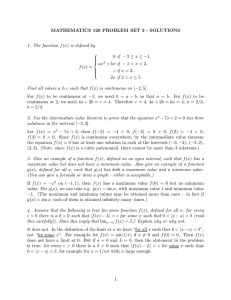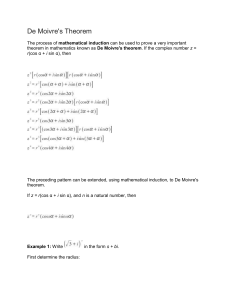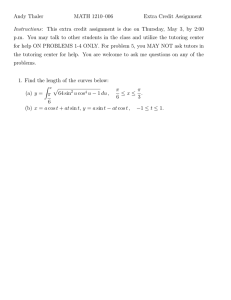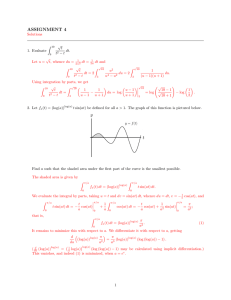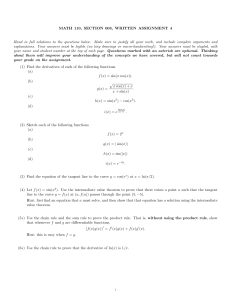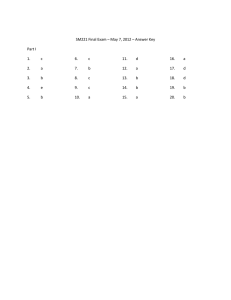De Moivre*s Theorem and Induction
advertisement
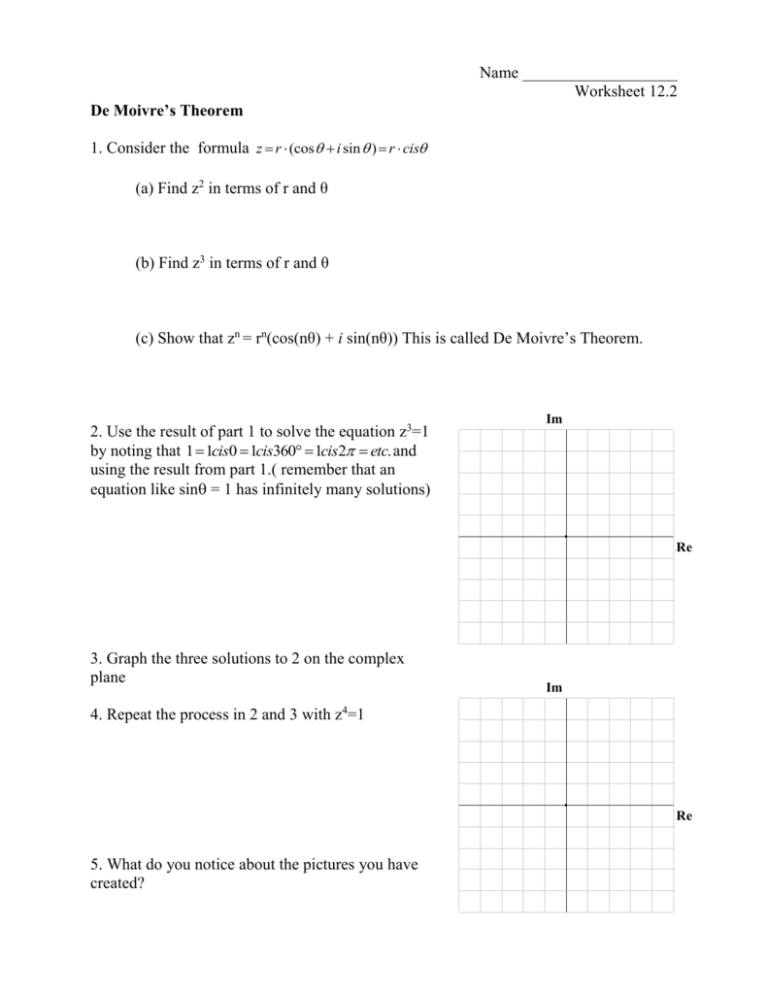
Name ___________________ Worksheet 12.2 De Moivre’s Theorem 1. Consider the formula z r (cos i sin ) r cis (a) Find z2 in terms of r and θ (b) Find z3 in terms of r and θ (c) Show that zn = rn(cos(nθ) + i sin(nθ)) This is called De Moivre’s Theorem. 2. Use the result of part 1 to solve the equation z3=1 by noting that 1 1cis0 1cis360 1cis2 etc. and using the result from part 1.( remember that an equation like sin = 1 has infinitely many solutions) Im Re 3. Graph the three solutions to 2 on the complex plane Im 4. Repeat the process in 2 and 3 with z4=1 Re 5. What do you notice about the pictures you have created? Im 6. Try to draw the solutions of z5=1 without any calculations and explain why you think your drawing is correct. Re 7. Find all possible solutions to following equations. Im (a) z 2 9 (b) z 6 1 Re (c) z 8 1 (d) z 3 i Im (e) z 4 1 Re (f) z 6 64 8. Find i




